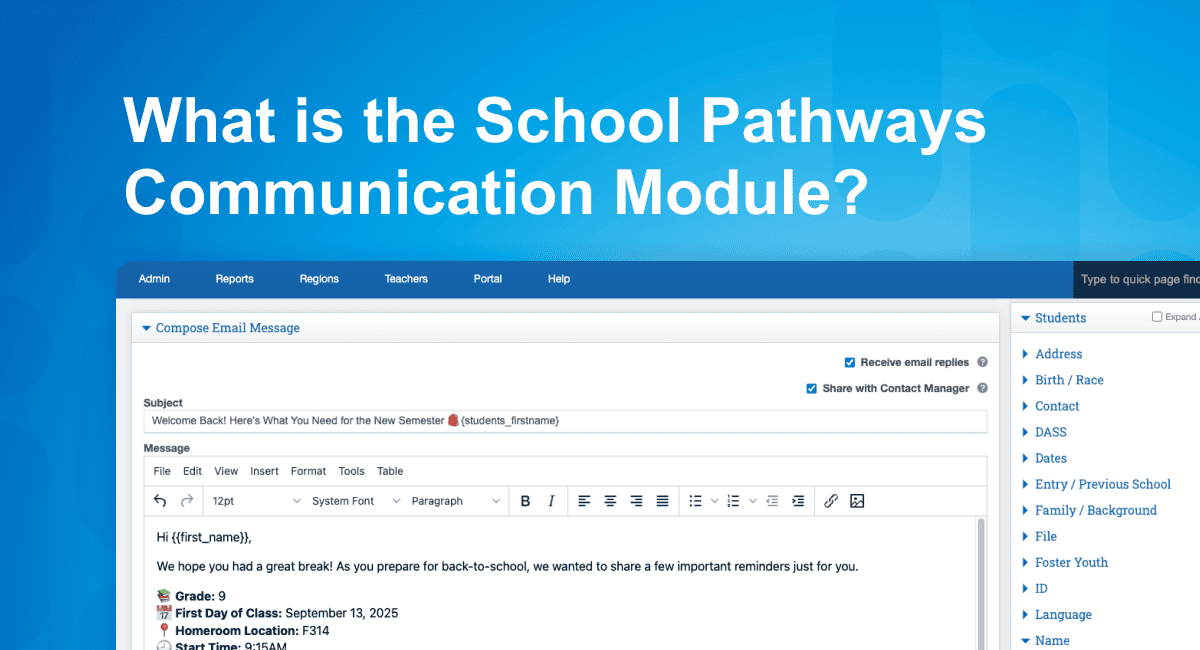A school lottery is a critical part of a school choice district program. Well-designed lotteries ensure equal access and opportunities for all students while helping schools meet their enrollment and regulatory requirements.
However, configuring and running multiple lotteries for choice programs requires more than a simple randomizer function on a spreadsheet. A truly fair, equitable, and transparent school selection process is configurable to each school’s needs and selection criteria. As educators increasingly offer school choice to their families, their enrollment tools should produce fair outcomes that set each student up for educational success.
So, how can district leaders ensure they build the right school lottery process from start to finish? In this article, we’ll explore key components of a successful school lottery process and provide a step-by-step guide to implementing a lottery design that works fairly and efficiently.
What Is a Lottery Preference or Priority?
Your school lottery must comply with state regulations while supporting district and internal school policies. To this end, the system must be configurable and account for lottery preferences (sometimes called priorities).
A lottery preference gives an advantage to eligible applicants who meet specific criteria. Applicants with a preference have a higher chance of admission compared to those without a preference. Preferences, which are usually school-specific, can also be weighted differently.
Preferences play a key role in school lotteries. They help maintain fairness, transparency, and equity by giving priority to students from underserved socioeconomic communities. They also help schools maintain a diverse student body. This allows students to apply for their preferred schools, programs, and services while simplifying the admissions process for educators and families.
Common lottery preference criteria include:
- Children of current school employees
- Siblings of enrolled pupils
- Pupils residing in the community school district
- Students at risk of academic failure
- Students with disabilities
- English Language Learners
Some school lottery systems are “blind.” This means they give equal weight to every applicant without considering preferences like those listed above. However, a blind lottery has its disadvantages. As the National Alliance for Public Charter Schools explains, “The ability to give preference toward disadvantaged students is crucial to schools whose mission it is to serve certain populations, like English learners or economically disadvantaged students.”
It’s no surprise that admission decisions can be difficult, especially for families who are navigating the maze of school choice options. Additionally, preferences and other nuanced requirements add layers of complexity that can feel overwhelming for both district leaders and families. This is why an intuitive, rule-based school lottery system is crucial to meeting goals for diversity and inclusion and maintaining transparency and fairness.
Step-by-Step Guide to Building a Rules-Based Lottery
Conducting lotteries in this age by placing names in a hat or using basic random sequence generators can be a lengthy process with questionable results. If you’re not careful, these methods can lead to problems such as human error, misplaced entries, and non-compliance with state and district regulations. Even more so, the lack of documentation poses mistrust and security risks.
This is why crafting a rule-based school lottery system demands thorough planning and tools at every stage. Let’s break down the steps needed to streamline enrollment selections throughout the application and lottery processes.
Collect Data and Verify Eligibility
To run a successful rule-based school lottery, district schools need accurate, up-to-date information about prospective students in addition to available seats per grade or program. This includes names, addresses, siblings, program preferences, and other details relevant to the selection criteria.
Paper-based processes can bring a host of administrative burdens, so opt for a user-friendly online application process to gather this information. Since families will need to prove their eligibility for preferences, a digital system provides built-in mandatory fields, validation checks, and document verification.
Rank Lottery Preferences
State statutes may require district schools to include preferential treatment for certain applicants. A district may also have schools with multiple choice programs, each with its own set of preferences. When multiple preferences come into play, the order in which preferences are applied matters.
Clarify which group of applicants should be given higher priority. For example, should sibling preference weigh more heavily than geographic proximity? When assigning rank, think about educational equity, program continuity, special needs, and parental choice. Especially in the context of choice placements, the ability to accurately and fairly weigh criteria becomes crucial to a fair process.
Use a Fair and Transparent Lottery Process
The best way to provide fairness, equity, and transparency is by using a rules-based, randomized lottery system that runs an unbiased selection according to your district or school lottery preference rankings. Look for configurable settings to establish preference criteria based on your district’s goals and policies. Schools should also be able to set limits based on location, grade level, or specific programs.
A well-designed lottery system benefits everyone. Equitable choice placements mean families are more likely to gain access to their preferred schools or programs, tailored to their unique circumstances. Meanwhile, district schools maintain a balanced student population, hitting those crucial goals for inclusion and diversity.
Manage Waitlists With Automated Technology
Waitlists are a key component of the school lottery process. A well-managed waitlist offers several core benefits:
- Provides applicants with visibility into their selection status
- Reinforces the integrity of the lottery system
- Maximizes equitable enrollment
- Ensures compliance with district policies and state regulations
For districts to fully maximize these advantages, start by setting up automated waitlist placement for students who are not selected during the lottery process. Any pre-defined selection criteria should be rooted in the waitlist process to achieve accurate student waitlist placements.
To ensure that no spots go unfilled, users should be able to accept, reject, or place students on the waitlist as needed.
Commit to Accessible, Regular Communication
The winning combo to family engagement? Accessible information and regular communication. Setting clear expectations in inclusive formats keeps the enrollment process moving smoothly, ensures that no family is left out of the loop, and supports fair access to school opportunities.
Whether it’s application submissions, lottery results, or waitlist placements, automated notifications keep families informed at each step in the process. Additionally, parents or guardians who have access to an online family dashboard can easily check their status at any time.
As you look for opportunities to engage and involve families, consider their language preferences. If your audience has other preferred languages, don’t stick to English; instead, use multilingual support systems. This could mean hiring bilingual staff, using translation capabilities in application portals, or including translated material in emails.
Create Audit Trails and Ensure Compliance
Audits are periodically conducted to ensure schools comply with all lottery placements and waitlist procedures. Oftentimes, districts need to demonstrate that they’ve contacted families of waitlisted applicants and record all contact attempts and responses. Some schools may be required to use an official system to track enrollment offer acceptances and declines.
In any case, make sure your lottery system records every action taken during the process. Automated record-keeping is the easiest method to log clear timelines – and ensure stress-free compliance. For example, a data-driven enrollment system will include time stamps for all entries and actions. Plus, districts can get ahead of any hiccups by monitoring the process at each step of the enrollment process with real-time insights into application data, lottery outcomes, and waitlist status.
Set Up for Successful School Lotteries
The needs of modern-day district school lotteries require more finesse and intention. Families expect timely, transparent communication and an efficient, streamlined, and fair process. Take the time to ensure that you’re meeting your community’s needs while meeting compliance surrounding choice placements and enrollment. With a rule-based school lottery system, districts can set the stage for every educator, student, and family to thrive during enrollment season with less effort.
At School Pathways, we offer a user-friendly Application and Lottery System that provides schools with school choice and clear, secure school selection processes. Chat with us to build a lottery system that delivers assurance, equity, and transparency in one solution.





